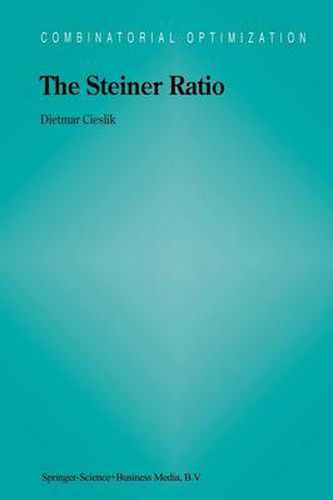Readings Newsletter
Become a Readings Member to make your shopping experience even easier.
Sign in or sign up for free!
You’re not far away from qualifying for FREE standard shipping within Australia
You’ve qualified for FREE standard shipping within Australia
The cart is loading…






This title is printed to order. This book may have been self-published. If so, we cannot guarantee the quality of the content. In the main most books will have gone through the editing process however some may not. We therefore suggest that you be aware of this before ordering this book. If in doubt check either the author or publisher’s details as we are unable to accept any returns unless they are faulty. Please contact us if you have any questions.
Steiner’s Problem concerns finding a shortest interconnecting network for a finite set of points in a metric space. A solution must be a tree, which is called a Steiner Minimal Tree (SMT), and may contain vertices different from the points which are to be connected. Steiner’s Problem is one of the most famous combinatorial-geometrical problems, but unfortunately it is very difficult in terms of combinatorial structure as well as computational complexity. However, if only a Minimum Spanning Tree (MST) without additional vertices in the interconnecting network is sought, then it is simple to solve. So it is of interest to know what the error is if an MST is constructed instead of an SMT. The worst case for this ratio running over all finite sets is called the Steiner ratio of the space. The book concentrates on investigating the Steiner ratio. The goal is to determine, or at least estimate, the Steiner ratio for many different metric spaces. The author shows that the description of the Steiner ratio contains many questions from geometry, optimization, and graph theory. Audience: Researchers in network design, applied optimization, and design of algorithms.
$9.00 standard shipping within Australia
FREE standard shipping within Australia for orders over $100.00
Express & International shipping calculated at checkout
This title is printed to order. This book may have been self-published. If so, we cannot guarantee the quality of the content. In the main most books will have gone through the editing process however some may not. We therefore suggest that you be aware of this before ordering this book. If in doubt check either the author or publisher’s details as we are unable to accept any returns unless they are faulty. Please contact us if you have any questions.
Steiner’s Problem concerns finding a shortest interconnecting network for a finite set of points in a metric space. A solution must be a tree, which is called a Steiner Minimal Tree (SMT), and may contain vertices different from the points which are to be connected. Steiner’s Problem is one of the most famous combinatorial-geometrical problems, but unfortunately it is very difficult in terms of combinatorial structure as well as computational complexity. However, if only a Minimum Spanning Tree (MST) without additional vertices in the interconnecting network is sought, then it is simple to solve. So it is of interest to know what the error is if an MST is constructed instead of an SMT. The worst case for this ratio running over all finite sets is called the Steiner ratio of the space. The book concentrates on investigating the Steiner ratio. The goal is to determine, or at least estimate, the Steiner ratio for many different metric spaces. The author shows that the description of the Steiner ratio contains many questions from geometry, optimization, and graph theory. Audience: Researchers in network design, applied optimization, and design of algorithms.